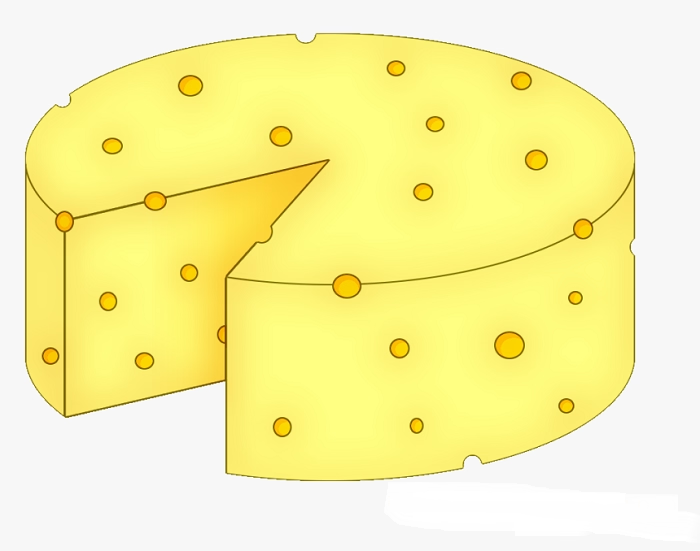Cheese is a delightful subject for drawing, whether you’re creating a cartoonish slice or a detailed realistic illustration. It’s a versatile subject that can be drawn in many styles, from simple shapes to intricate textures. In this guide, we’ll explore how to draw cheese, offering useful tips, techniques, and step-by-step instructions to help you create your own cheese artwork.
Table of Contents
Why Would You Want to Draw Cheese?
There are several reasons why cheese might be the perfect subject for your next drawing:
- Creative Freedom: Cheese comes in many shapes, textures, and colors, giving you plenty of opportunities to experiment with your drawing style.
- Fun and Whimsical: Drawing cheese can be a fun, lighthearted activity, especially when creating cartoon or exaggerated designs.
- Practice Textures: Drawing different types of cheese provides an excellent opportunity to practice shading and texture techniques to improve your drawing skills.
Best Tips for Drawing Cheese
Start with Basic Shapes
Cheese often comes in simple shapes, like wedges, cubes, or slices. Begin by sketching the basic shape of the cheese you want to draw.
How to Do It:
- Use light pencil strokes to outline a simple wedge, cube, or rectangular shape to start.
- You can also experiment with drawing different cheese types, such as a round wheel or triangular slices.
Add Details for Texture
Cheese has a unique texture, and capturing it will bring your drawing to life. Different cheeses, like cheddar or brie, have distinct surface characteristics.
How to Do It:
- For soft cheeses, draw smooth curves and gentle indentations on the surface.
- For harder cheeses like parmesan, use sharper lines and small cracks to suggest a more solid, aged texture.
Focus on the Surface
Cheese can have holes, rinds, or crevices, depending on the type. Adding these details will enhance the realism and make the cheese look more authentic.
How to Do It:
- For Swiss cheese, draw a series of circular holes throughout the body of the cheese.
- For a block of cheddar, add some rough edges to simulate the rind or slight cracks to show texture.
Shading for Depth
To give your cheese drawing depth and make it appear three-dimensional, shading is key. Adding shadow beneath the cheese and around its edges will create the illusion of light and depth.
How to Do It:
- Lightly shade the areas of the cheese that are not directly lit, such as the side opposite to your light source.
- Use smooth shading for soft cheeses and sharper, cross-hatched lines for hard cheeses.
Add Color
Color is important when drawing cheese, as it brings life to the illustration. Different cheeses come in various shades, from yellow to white, and even orange.
How to Do It:
- Use colored pencils or digital tools to add color to your cheese drawing.
- For a classic yellow cheese, use golden yellows or deep oranges.
- For white cheeses like mozzarella, use soft, creamy whites and off-whites.
Highlight the Cheese’s Surroundings
Sometimes, drawing the cheese’s environment can make the cheese pop out more effectively. Whether it’s a piece of cheese on a cracker or paired with fruit, adding a little context will make your drawing more interesting.
How to Do It:
- Draw a plate, crackers, or even grapes around the cheese to create a setting.
- Lightly sketch the background, using soft lines so it doesn’t overpower the cheese.
Different Cheese Drawing Styles
Cartoon Cheese: Fun and Playful

Cartoon cheese drawings are simple and exaggerated, focusing on bold outlines and playful shapes.
How to Do It:
- Draw exaggerated shapes with thick, dark outlines.
- Add fun elements like eyes or smiles to make the cheese more whimsical.
Realistic Cheese: Detailed and Precise
Realistic cheese drawings require more attention to detail, focusing on light, texture, and shadow to create a lifelike representation.
How to Do It:
- Focus on shading and highlighting to capture the soft or hard textures.
- Pay attention to the finer details, such as small holes in Swiss cheese or wrinkles on the rind of a brie.
Abstract Cheese: Creative and Expressive
Abstract cheese drawings allow for more creative freedom, experimenting with shape, color, and texture in unique ways.
How to Do It:
- Use unusual shapes, vibrant colors, and interesting textures to interpret cheese in a more abstract way.
- You can use mixed media, like watercolor or ink, for a more experimental feel.
How to Choose the Right Style for Your Cheese Drawing
The style you choose depends on the purpose of your artwork and your artistic preferences. Here are some things to consider:
- For Fun and Humor: Cartoon cheese is a great option for whimsical illustrations, where exaggeration and simplicity are key.
- For Realism: Realistic cheese drawing is perfect for artists looking to capture the true essence of cheese in their work.
- For Artistic Expression: Abstract cheese allows for the greatest creative freedom, ideal for artists looking to experiment with different media and interpretations.
How to Store Cheese Drawings
Storing your cheese drawing is crucial to preserving the quality of the artwork. Here’s how to keep your cheese illustrations in top condition:
- Use a Portfolio: Store your drawings in a protective portfolio to keep them safe from dust and damage.
- Frame Your Artwork: For a finished drawing, consider framing it to protect the paper and display it proudly.
- Digital Storage: If you’re drawing digitally, make sure to save your work in high resolution and back it up in the cloud.
Frequently Asked Questions (FAQs)
What’s the best way to start drawing cheese?
Begin with simple shapes and work your way up to adding details like texture and shading for depth.
Can I draw cartoon cheese?
Yes, cartoon cheese is fun and easy to draw, with exaggerated shapes and bold outlines.
How do I make my cheese drawing look realistic?
Focus on shading, adding texture, and using highlights to capture the smoothness or hardness of the cheese.
How can I add color to my cheese drawing?
Use colored pencils or digital tools to add a range of colors, from golden yellows to creamy whites, depending on the cheese you’re drawing.
Can I draw cheese in an abstract style?
Yes, abstract cheese drawings allow for creative expression and a unique approach to the subject matter.

